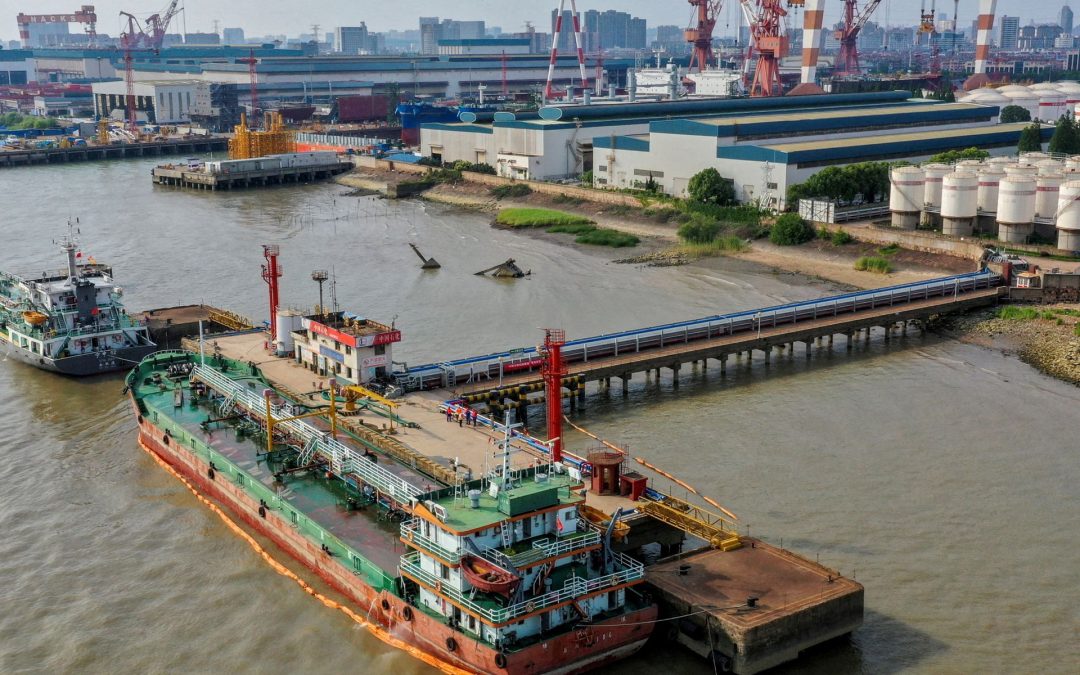The shipping industry will need to significantly increase its uptake of bio- and hydrogen-based marine fuels by 2040 to help the world achieve net-zero emissions by midcentury, Shell said in its energy security scenarios report.
In the report published March 21, the UK major explored how the energy mix will evolve in two scenarios — Archipelagos, where net-zero will be “in sight” but not achieved by 2100, and Sky 2050, where net-zero will be reached by midcentury, a condition scientists said would be required to avoid climate disasters.
While the global bunker mix is currently dominated by oil-based fuels, Shell said the 2030s will see the arrival of containerships fueled by hydrogen or hydrogen-based ammonia in Sky 2050, while such a development will be a decade later in Archipelagos.
In the Sky 2050 scenario, the shipping industry will have a 10% biofuel share in fuel mix and 10,000 ships powered by hydrogen fuel cells, ammonia, or other types of hydrogen-based fuels by 2040.
Cargo-carrying ships will consume 11.56 Ej of energy in 2040, including 1.49 Ej of hydrogen, 0.57 Ej of gaseous hydrocarbon fuels and 9.42 Ej liquid hydrocarbon fuels, according to Shell.
In Sky 2050, hydrogen’s share in the marine energy mix will rise to 44.4% in 2050, from 12.9% in 2040, before a further jump to 98.5% in 2100.
Separately, Shell said cargo-carrying ships will consume 12.61 Ej of energy in Archipelagos, where the pace of decarbonization is slower amid energy security concerns. This will include 0.05 Ej of hydrogen, 0.43 Ej gaseous hydrocarbon fuels, and 12.13 Ej liquid hydrocarbon fuels.
Hydrogen’s share in the marine energy mix will rise to 5% in 2050, from 0.4% in 2040, before a further hike to 50.3% in this scenario.
“Hydrogen can play a crucial role in helping the world reach net-zero emissions. It is particularly suitable for use in hard-to-electrify sectors like heavy-duty transport, heavy industry, shipping and aviation because of its high energy density,” Shell said in its energy transition progress report March 16.
The major has stressed its scenarios do not represent predictions. S&P Global Commodity Insights expects ammonia and hydrogen to account for 20.7% of global bunker consumption of 300 million mt in 2050 if the public and private sectors accelerate decarbonization initiatives.
Current projects
For the near term, Shell said it has started supplying biofuels and LNG to the shipping industry to promote maritime decarbonization while studying renewable natural gas as marine fuel.
Industry estimates suggest LNG can reduce emissions by 20%-30% versus oil-based fuels. Biofuels could be carbon neutral and their decarbonization effects depend on blending proportions. Hydrogen and ammonia could be zero-emission fuels when produced from renewable energy.
In the energy transition report, Shell said that it completed more than 250 ship-to-ship LNG bunkering operations in 2022, without disclosing sales volume.
Some LNG producers, including Shell and TotalEnergies, have been investing in bunkering infrastructure in recent years, eyeing the maritime sector as an emerging market for their products and in bids to cut Scope 3 emissions.
In its latest annual sustainability report, TotalEnergies said it sold more than 1 million cu m of the fuel in 110 bunkering operations last year.
The French major has been operating an LNG bunker vessel in Rotterdam since November 2020 and a second in Marseille since January 2022. A third one, the 12,000-cu m Brassavola, is due to serve in Singapore from this quarter.
TotalEnergies aims to supply 10% of the global LNG bunker market by 2030. S&P Global expects LNG to make up 7.8% of the world’s bunker consumption of 328 million mt in 2030 in its reference case.
Industry participants said LNG sales as marine fuel were hurt by high prices in 2022, as evidenced by lower volumes reported by Rotterdam and Singapore, but demand could recover as LNG prices fell after reaching a peak.
LNG bunker prices hit a record high of $3,476.614/mt on an oil-equivalent basis in Rotterdam Aug. 26 before easing to $592.448/mt March 21, S&P Global data showed. The price of 0.5%S marine fuel oil, the most common type of bunker fuel currently, was $525/mt.
Source: Hellenic Shipping News






